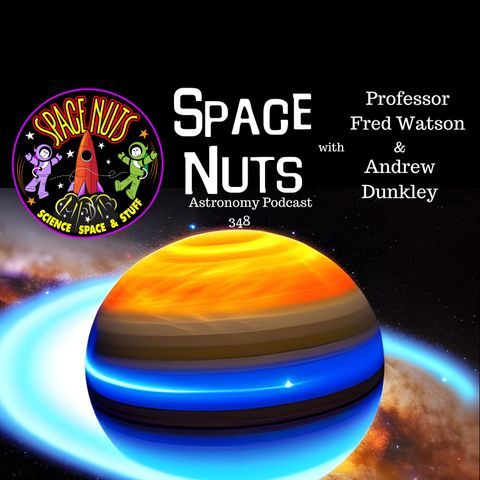Unlocking the Mystery of Exoplanet Magnetic Fields | Space Nuts 348

Scarica e ascolta ovunque
Scarica i tuoi episodi preferiti e goditi l'ascolto, ovunque tu sia! Iscriviti o accedi ora per ascoltare offline.
Unlocking the Mystery of Exoplanet Magnetic Fields | Space Nuts 348
Questa è una trascrizione generata automaticamente. Si prega di notare che non è garantita la completa accuratezza.
Capitoli
Descrizione
In this episode, you will be able to: - Explore magnetic fields on exoplanets and their fascinating role in supporting life. - Delve into the reasons behind Virgin Orbit's bankruptcy...
mostra di più- Explore magnetic fields on exoplanets and their fascinating role in supporting life.
- Delve into the reasons behind Virgin Orbit's bankruptcy amid SpaceX's thriving success.
- Uncover the mysterious fast blue optical transient (FBOT) explosions and their significance in space.
- Understand the correlation between Voyager spacecraft's speed and interstellar gas density.
- Engage with the latest news in space science and astronomy to stay updated and informed.
The resources mentioned in this episode are:
- Visit the website phys.org (P-H-Y-S) to read up on the discovery of magnetic fields on exoplanets.
- Learn more about the Liverpool Telescope and its polarimeter equipment by visiting the University of Liverpool's website.
- Explore the University of Sheffield's Department of Physics and Astronomy to learn more about Dr. Justin Mornd's research on FBOT explosions.
- Stay informed about updates on space weather and its potential impact on Earth by following the news from the National Radio Astronomy Observatory.
- Keep an eye on future discoveries and research related to auroras on stars and exoplanets, as well as their potential implications for the search for life in the universe.
Do Exoplanets Have Magnetic Fields?
In this episode, the hosts dive into the topic of magnetic fields on exoplanets and their importance for potentially supporting life. The discussion touches on the role of Earth's magnetic field in shielding the atmosphere and the planet's surface from harmful subatomic particles. For a rocky planet to have a magnetic field, the presence of an iron and nickel core is essential, as it generates a magnetic field as the planet rotates. For life to exist or have the potential to exist on these planets, having a magnetic field could play a crucial role, offering a protective layer against harmful cosmic radiation. Andrew Dunkley and Professor Fred Watson highlight the recent discovery of the first exoplanet with a magnetic field, YZ Ceti B, which is located around 12 light-years away and orbits an M-dwarf star. Scientists have used radio emissions from the star to study the interaction between the planet and the star's magnetic field, revealing that YZ Ceti B generates bursts of radio emissions, an indication of it having its own magnetic field. This discovery holds great significance as it suggests that other rocky exoplanets may also have magnetic fields, making them potential candidates for supporting life. However, some exceptions in our own solar system, such as Venus and Mars, challenge this notion.
I'm seeing this thing that no one has seen happen before, which is always a nice thing when you're a working astronomer and you're sitting at a big telescope somewhere and something turns up. - Professor Fred Watson
For more Space Nuts visit www.spacenuts.io
Informazioni
| Autore | bitesz.com |
| Organizzazione | bitesz.com |
| Sito | spacenuts.io |
| Tag |
Copyright 2024 - Spreaker Inc. an iHeartMedia Company


Commenti